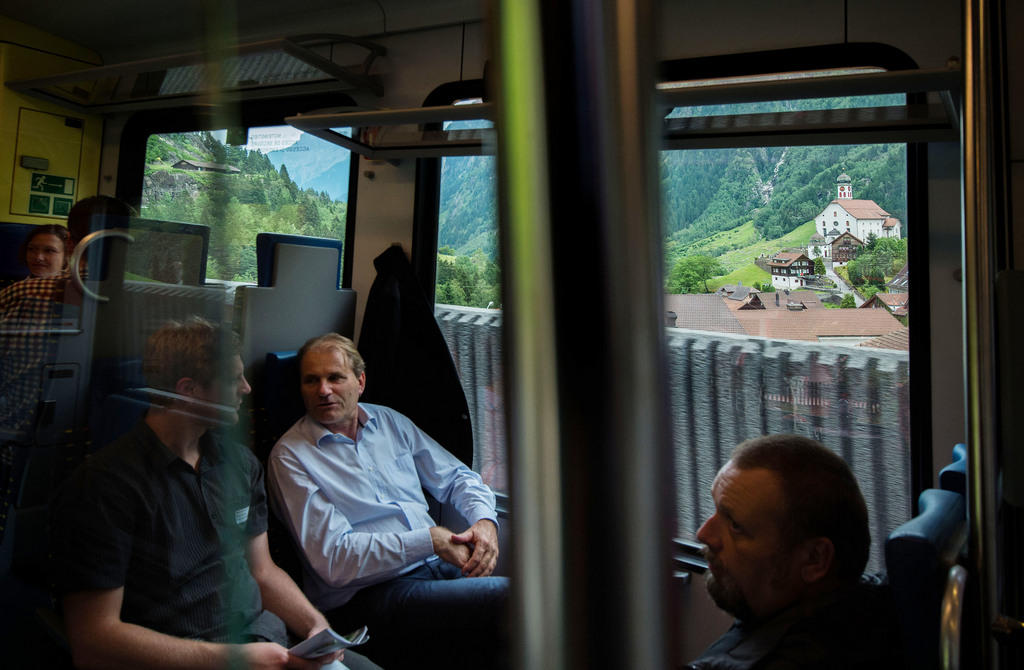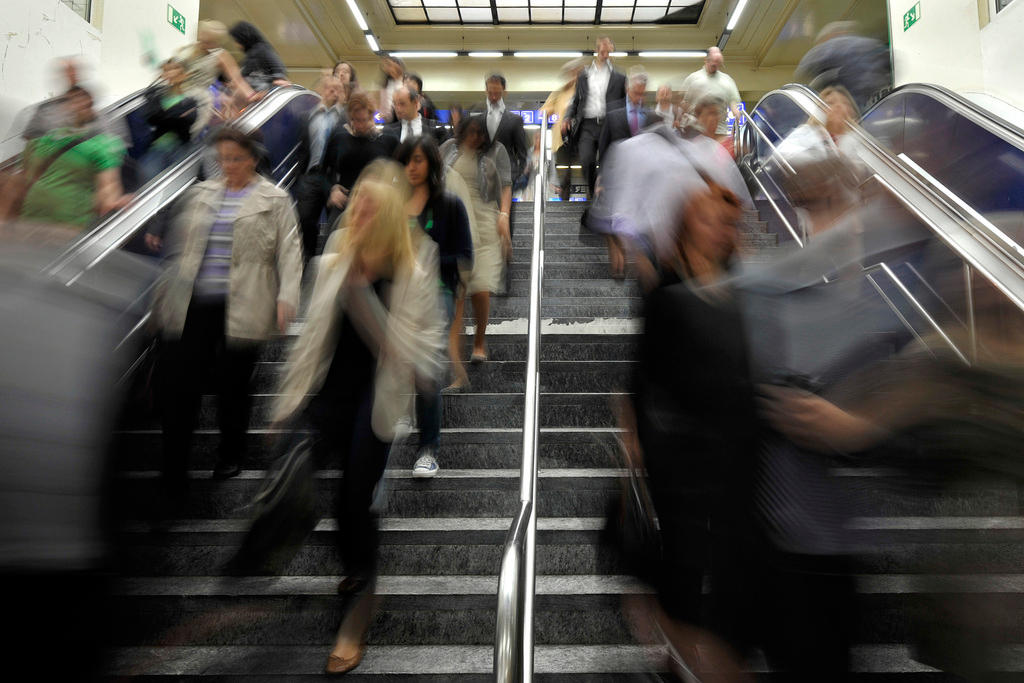Train-spotting and people-watching at five major stations
Switzerland is known worldwide for its very dense and well-organised railway network, which more than a million travellers use per day. One hub is the main railway station in Zurich.
Around a third of all commuters in Switzerland depend on public transport to get to work. Longer sections are often tackled by train. On the Swiss Federal Railways network alone, there are around 10,600 trains a day. In addition, the entire 5,000-kilometre-long railway network of all national and regional train companies is almost completely electrified.
Project ‘The Sounds of…’
swissinfo.ch and its partners have collaborated to bring you soundscapes and images of similar places in each of our countries. The videos from Radio Canada InternationalExternal link, Radio PolandExternal link, Radio PrahaExternal link and Radio Romania InternationalExternal link provide a chance to tour the train stations of their countries.
Zurich main stationExternal link is the largest train station in Switzerland and one of the busiest in the world. It is the most important hub for trains from Switzerland and neighbouring countries. Today’s station has 16 ground-level and 10 underground tracks. In addition, the station offers numerous restaurants, takeaways, shops and service outlets on various floors.
Built in 1847, the station is one of the oldest in Switzerland. The main hall, which is 20 metres high and almost 2,000 square metres wide, was and still is the heart of the station. There are also several installations of contemporary art, such as the colourful guardian angelExternal link by the French-Swiss artist Niki de Saint Phalle.
Future projects
Swiss Federal Railways is the largest railway company in Switzerland. Founded in 1902 by merging former private railways, today it is state-owned. Various measures to improve the railway infrastructure are in the works. For example, of the 800 stations and stops nationwide, up to 580 will be updated to provide greater accessibility, especially for people with disabilities.
In the canton of Valais, a Hyperloop test track for the high-speed transport of goods in a vacuum is being designed. In 2019, the company EurotubeExternal link, in partnership with the Federal Railways, will build a vacuum tube in which capsules can be transported at a speed of 900km per hour.
Other big stations
What is train travel like in other parts of the Western world? A partnership with public service media in Poland, Canada, the Czech Republic and Romania yielded the following dispatches:
Warszawa Centralna is the main railway station in Warsaw, Poland. In 2017, it handled 15.1 million passengers. Nearly 1,000 trains, most of them long-distance, run through per day. Its construction began in 1972 and was a flagship project during the Communist era. The station is located in the very centre of the city. Some years ago the grey concrete building was refurbished. Now the main hall has more light and a more friendly atmosphere.
Central Station in Montreal, Québec, opened in 1943. It is the second-busiest rail station in Canada, after Toronto’s Union Station in Ontario. The station is adorned with art deco bas-relief friezes on its interior and exterior walls. The east and west interior walls of the station feature two large bas-reliefs depicting Canadian life, arts and industry. Included in the bas-reliefs are some of the lyrics of Canada’s national anthem, “O Canada”. The lyrics are in French on the east side of the station and in English on the west side.
The main railway station in Prague is the largest passenger railway station in the Czech Republic. It handles 27 million passengers per year. The historical building above the railroad is also the largest Art Nouveau monument in the country. Work on it started in 1869 and its present-day appearance is the result of a recent reconstruction made according to the original design by architect Josef Fanta.
The North Station in Bucharest is the biggest railway station in Romania. Approximately 300 trains arrive and depart from this station every day. The station was built between 1868 and 1872, and the building is on the list of historical monuments in Bucharest. When the famous Orient Express train was inaugurated in 1906, the North Station was one of its stops. Today, the original Paris-to-Istanbul connection passes through the Romanian station twice a year.
Correction: an earlier version of this story stated incorrectly that the Zurich station had 26 above and 16 below ground tracks.












You can find an overview of ongoing debates with our journalists here . Please join us!
If you want to start a conversation about a topic raised in this article or want to report factual errors, email us at english@swissinfo.ch.